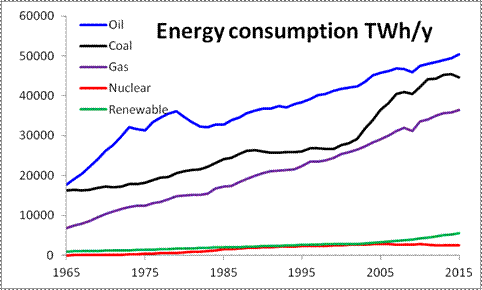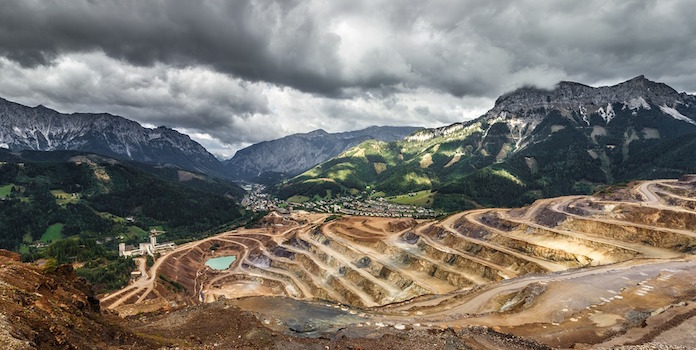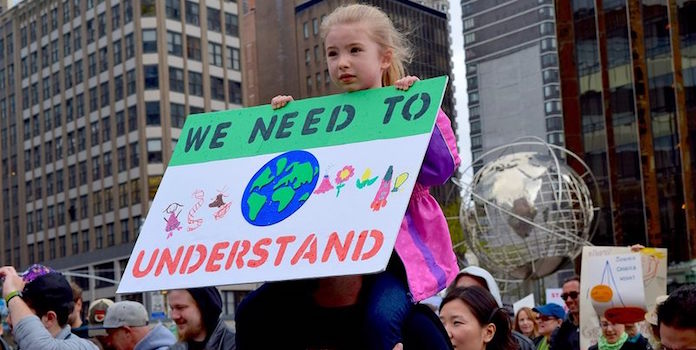Top Three Environmental Issues That Solar Energy Could Help

Can transitioning to solar energy make a difference to existing environmental issues?
It’s no secret that our home planet suffers from a plethora of environmental issues that keep worsening. Which problems will be the most harmful in the long run and how can solar energy improve these issues?
While people like Elon Musk have the colonization of Mars in mind with a thorough “Making Humanity a Multi-Planetary Species” proposal, others, such as Stephen Hawking, feel that humans should leave Earth. But is abandoning our beautiful planet or expanding our species into space the only two options to ensure the survival of the human race?
Instead of simply running away from our problems, how about we address the environmental issues that the planet faces and take the right measures towards preserving Earth and all of its living organisms? Let’s take a look at three significant environmental issues and examine how the adoption of renewable energy alternatives like solar energy could help.
1. Depletion of natural resources
First on our list of environmental issues is the depletion of natural resources, as shown in our featured image of the deforestation for the use of clay in the Brazilian city of Rio de Janeiro.
Some estimates suggest that Earth currently has enough natural resources to sustain approximately two billion people. With the world population currently at 7.2 billion and growing every day, you don’t need to be a rocket scientist to do the math: we are consuming minerals, water, oil, forests, etc. at a much faster rate than they can be replenished.
Depleting the planet of our forests
The increasing demand for timber, wood-based products, land for housing and other buildings, and cattle grazing leads to deforestation, which causes the destruction of our ecosystems and further aggravates the planet’s numerous environmental issues.
The United Nations Food and Agriculture Organization states that 18 million acres of forest are lost to deforestation annually. While thirty percent of all land is currently covered by forests, only about fifty percent of tropical forests remain today – and NASA predicts that rainforests could disappear altogether in only one hundred years if we continue deforestation at our current levels.
Maximizing biodiversity and maintaining a healthy ecological balance without threatening a wide range of plant and animal species is certainly important. Deforestation also causes landscape erosion and soil structure deterioration, which in turn increases the potential for dangerous landslides.
It’s not enough that forty-eight football fields of trees are lost every minute according to the World Wildlife Fund, but deforestation also contributes to climate change.
The soils of forests can rapidly dry out without abundant foliage from tree cover, and a lack of trees will fail to return water vapor to the atmosphere through the water cycle. Not only can this cause severe temperature fluctuations that harms fauna and flora, but about fifteen percent of annual harmful carbon dioxide emissions is in fact due to forest loss.
This high annual emission level isn’t solely due to the fact that plants and trees convert carbon dioxide and release oxygen through photosynthesis. (Did you know that oxygen levels were at about 30 to 35% in prehistoric times, when there were twice as many forests, versus a measly 21% today?)
There’s more to the story than meets the eye. It’s not just carbon absorption that decreases when chunks of trees are sentenced to the guillotine. Any carbon stored in a tree gets released in the atmosphere, whether the tree is left to decompose on the ground or the wood is burned.
Let’s not forget that strip mining, which involves stripping off vegetation or mountain tops to access underground coal, boosts carbon dioxide emission, contaminates water, disrupts entire ecosystems, destroys forests and wildlife and increases air pollution in surrounding towns.
While solar energy does not directly slash the rate of deforestation that occurs for agriculture, logging, and cattle grazing purposes, renewable energy alternatives that move away from deforestation for things like coal mining certainly do help.
Depletion of fossil fuels
No surprise here – the fossil fuels that we are relying on to fulfill our transportation and electricity needs aren’t limitless.
Fossil fuels actually formed hundreds of millions years ago and are an astonishingly dense form of energy. The time they took to form, paired with their rate of depletion, makes them nonrenewable resources.
If we look at the rate with which we consume them (approximately 11 billion tons of oil per year for example), and the rate at which oil reserves are disappearing (around 4 billion tons of crude oil annually), it becomes a no brainer to conclude that we will one day run out – approximately by the year 2052, some estimates suggest (see link above).
Factoring in an increased consumption of gas and coal to replace energy needs previously met by oil, and also accounting for an increasing world population and its growing needs, chances are we could run out of all fossil fuel energy sources by the year 2088 (see link above).
An obvious solution to this problem would be to focus on renewable energy technologies such as solar and wind power. Data from Columbia University shows that as of 2016, only a measly 10 percent of global energy consumption can be attributed to renewable energy sources (and most of that from hydro), compared to oil (33.3 percent), coal (28.1 percent), natural gas (24.1 percent) and nuclear power plants (4.5 percent).
With an increasing world population, global energy consumption is steadily increasing. Unfortunately, renewable energy alternatives continue to move at a much slower pace than other types of energy sources.

World Energy Consumption Trends (1965 – 2015)
While renewables do make up just a small percentage, they are growing quite fast – especially in the US and Europe. And with renewables requiring no fuel beyond sun, wind, and water, each kilowatt-hour produced by solar is a kilowatt-hour not being mined from the earth. One small solar installation doesn’t make a huge difference by itself, but when millions and millions across the world are added together, they can lead to huge changes!
Depletion of minerals
Minerals are used everywhere, from food and clothing to construction materials such as gravel and sand. Our sources of basic materials including gas, copper, aluminum, coal, and iron will dissipate faster than we think, and we need to be prepared with alternatives.
Ironically, harnessing some of these minerals requires the use of others with necessary extensive construction equipment and planning. The exploitation of gas, oil, and coal involves exploratory drilling, setting up plant sites, refining, hoisting and trenching equipment, as well as extraction and transport in oil tankers and pipelines.
All of this, of course, only furthers the rate of carbon dioxide emission, and increases levels of air, water, and soil pollution – all of which could be reduced dramatically by the implementation of renewable energy technologies. Not only would our rate of fossil fuel use slow down if we transition to more sources like solar energy, it would have much less impact on our environment.
2. Global warming and climate change
Second on our list of environmental issues is the frightening warming of our planet.
Burning fossil fuels releases a plethora of harmful greenhouse gases, including nitrous oxide, fluorinated gases, and most (in)famously carbon dioxide. (Methane,another dangerous greenhouse gas, is released primarily through pipeline oil drilling and pipeline transportation).
Levels of carbon dioxide in the atmosphere have drastically increased by around 41 percent since the Industrial Revolution. In fact, over 80 percent of greenhouse gas emissions in the United States in 2015 were attributed to human activities – primarily fossil fuels used for electricity, transportation, and industrial activities. In contrast, renewable energy alternatives contribute to less than one percent of energies that cause global warming.
The greenhouse effect, caused by the above list of greenhouse gases, unsurprisingly leads to global warming. Disastrous consequences of global warming and climate change include rising sea levels, an increased rate of natural disasters, and the destruction of ecosystems and wildlife.
Rising sea levels
Data shows that oceans have risen by eight inches since 1880 due to a 1.4° Fahrenheit rise in temperature related to human activities.
There are two main reasons why global warming impacts the levels of our oceans. You might be familiar with the first reason. Fifty-two percent of global rising sea levels can be attributed to the melting of polar caps, which adds water to Earth’s oceans. Another thirty-eight percent is attributed to a hotter atmosphere that increases the temperature of water, causing it to expand. The remaining ten percent is due to other reasons.
Statistics become even more alarming when we look at projections (see Fact 4, link above): oceans will have risen by six to 10 inches above the current sea level by the year 2050, and twelve to forty-eight inches by the year 2100.
Keep in mind that some locations around the world are more prone to experiencing higher sea level rises, based on global, regional and local factors. For instance, the Indian Ocean is reportedly now rising at an accelerated rate compared to the global average.
Natural disasters
Since temperatures over land can be affected by a boost of greenhouse gases, global warming increases the frequency and intensity of storms including cyclones, monsoons, hurricanes and tropical storms. In the words of Dr. George Tselioudis, a research scientist at Columbia University and the GGIS (NASA Goddard Institute for Space Studies):
If we are creating an atmosphere more loaded with humidity, any storm that does develop has greater potential to develop into an intense storm.
Wildlife
Drastic weather changes are bound to affect the landscape and the habitat of wildlife, thus irrevocably affecting its population. While some Arctic animals such as the polar bear are losing ground because of melting polar caps, others are forced to relocate due to heat waves and flooding, creating an ecological imbalance that threatens hundreds of other species.
In his study The Broad Footprint of Climate Change From Genes to Biomes to People, Dr. Brett Scheffers of the Department of Wildlife Ecology and Conservation at the University of Florida explores how climate change (specifically 1 degree Celsius) is not only affecting the seasonal responses and population distribution of animals, but their genetics and physical characteristics as well.
For instance, red knots, a shorebird of the Arctic, are suffering from malnutrition due to global warming and are shrinking in size, while climate pressure is affecting the skull shape of chipmunks in Yosemite National Park.
Although we cannot eliminate every contributing source of greenhouse gases, we can try to slow down the rate at which our planet is warming by shifting more of our energy generation to options like solar that release little to no dangerous emissions.
3. Pollution
Third on our list of environmental issues is the widespread problem of pollution.
The way we treat Earth would make anyone believe that we have a brand new planet on standby once we are done polluting the air, water, and soil, and killing off all living species to ensure our survival. Needless to say, this is far from the case.
Air pollution, particularly, has devastating effects on land, oceans, and animals.
Sources of air pollution include:
- The combustion of fossil fuels (coal, natural gas, oil and others) for the generation of electricity;
- Transportation fuels;
- Industrial procedures that emit pollutants;
- Agriculture burning and land clearing;
- Natural processes such as volcanoes and dust storms.
Out of the above sources of air pollution, fuel combustion is probably the guiltiest culprit. The process releases heavy metals such as mercury and lead (some fuels contain lead additives), as well as particulate matter, sulfur oxides, and nitrogen oxides into our atmosphere.
Furthermore, the incomplete combustion of fossil fuels releases carbon monoxide into the air, which can easily turn into carbon dioxide by binding with a hydroxyl radical (OH).
Knowing that high levels of air pollution cause acid rain, which infiltrates bodies of water and poisons entire forests and ecosystems, avoiding the use of fossil fuels and fossil fuel-powered transportation by switching to renewable energy alternatives seems like a logical plan of action.
Obviously, adopting solar and other renewable technologies has a direct positive effect on pollution: they don’t create any! The more of our electricity generation we replace with renewable sources, the less pollution we create. Feel free to read through Top Four Environmental Benefits of Solar Energy to dig deeper into the details and impact of fossil fuels on air pollution.
The future – addressing environmental issues
As we have seen, our home planet faces numerous environmental issues, some of which could be greatly helped by adopting state-of-the-art clean energy technologies such as solar panels, the Tesla Solar Roof, and electric cars.
Unfortunately, the Trump administration does not see eye-to-eye with green energy advocates and environmental enthusiasts, pulling out of the Paris agreement and going as far as deleting pages from the Environmental Protection Agency website.
But as individuals, we can still make our own environmentally conscious choices: after all, adopting a solar way of life can significantly improve the well-being of both our planet and our lives. For the sake of our children and their children, we need to understand solar, the benefits, and spread the word. Let’s make a difference!
Image Credits under CC License via Wikimedia – 1, 3, & Pixabay – 2, 4, 5, 6




